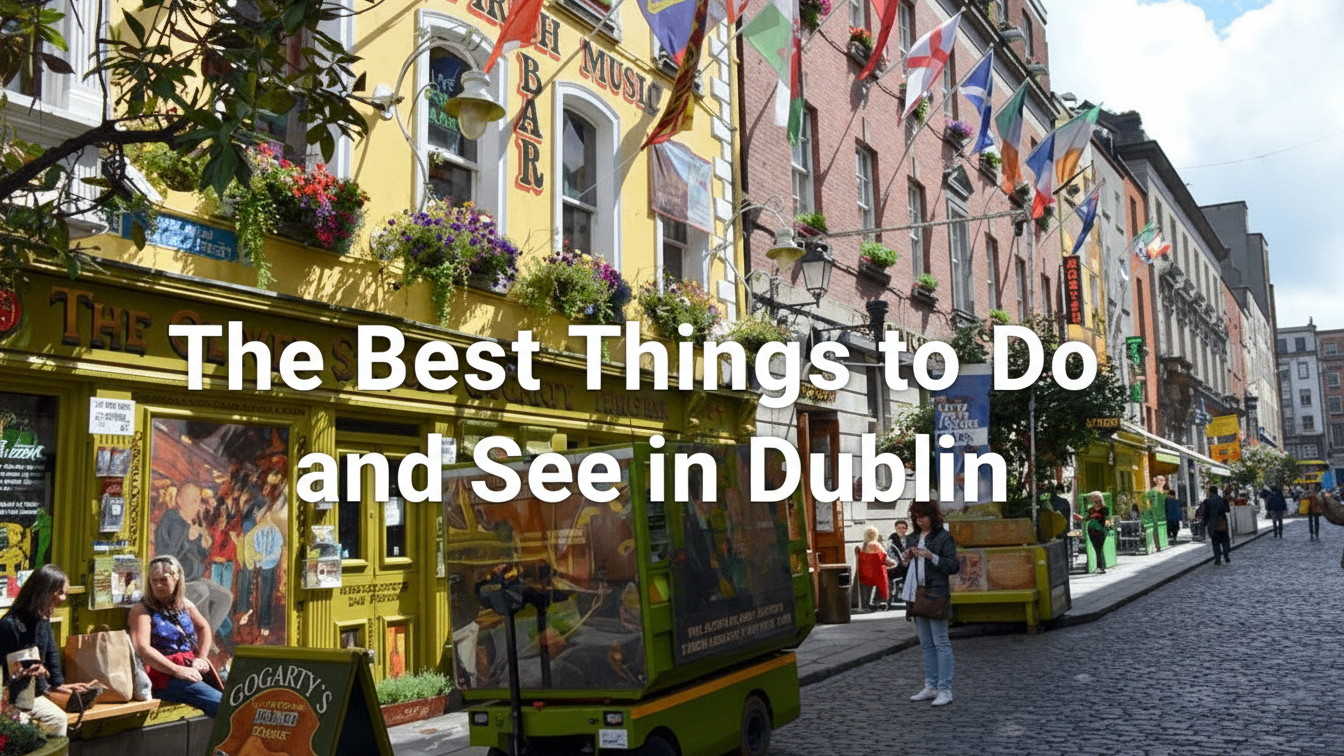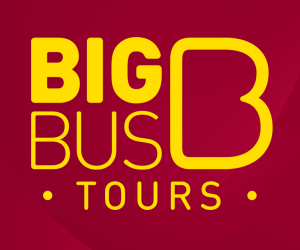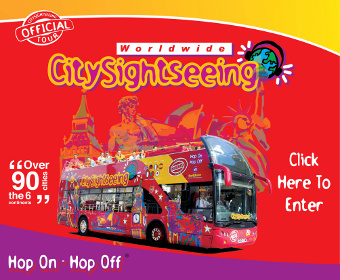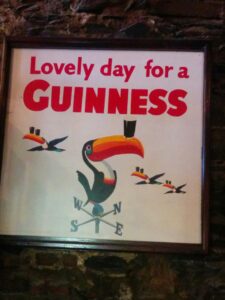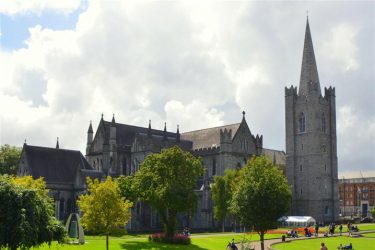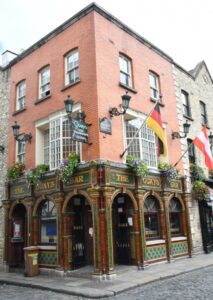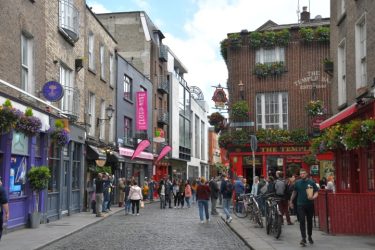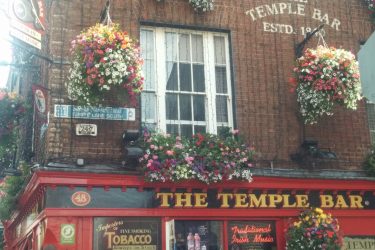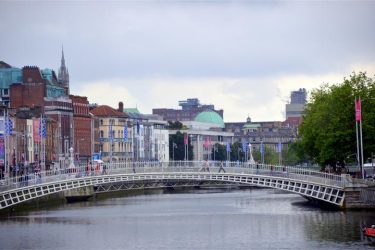The bustling and interesting city of Dublin, which serves as the capital of Ireland, provides tourists with a unique mix of entertainment, culture, and history. You will experience the welcome and amiable environment that Ireland is known for as soon as you get off the plane.
Investigate Dublin’s historic sites as one of your first activities. Among the must-see sights are Dublin Castle, Trinity College, and the Book of Kells. Ireland’s oldest institution, Trinity College, was established in 1592 and has a beautiful campus. One of Ireland’s most prized artefacts is the 9th-century Book of Kells, a text with exquisite illustrations. Dublin Castle, which was initially constructed in the 13th century, has been a royal residence, a military castle, and is still utilized for official ceremonies and events.
Through its numerous bars, Dublin’s history may also be experienced. Many of the city’s pubs have been serving customers for hundreds of years, making the city home to some of the oldest in the entire globe. The Brazen Head, which dates back to 1198, claims to be Ireland’s first tavern. O’Donoghue’s, the Stag’s Head, and the Temple Bar are some more well-liked choices. These pubs are social hubs where you may meet locals and other travelers alike in addition to serving fantastic beer and traditional Irish meals.
If you enjoy reading, Dublin is a city that will motivate you. It is the birthplace of several famous writers, like as Oscar Wilde, W.B. Yeats, and James Joyce. You can wander across St. Stephen’s Green, where there is a statue of Wilde, or you can go to the James Joyce Centre. The Dublin Writer’s Museum is another place that honours Ireland’s literary heritage.
In summary, Dublin is a city with something to offer everyone. Dublin offers a wide variety of activities, whether your interests are in history, literature, or simply relaxing with a pint of Guinness in a warm bar. The city is well worth visiting because to its welcoming attitude and vibrant culture. In this article, we will give you our list of the best things to do and see in Dublin.
Hop On Hop Off Tour Buses in Dublin
Dublin’s hop-on, hop-off tour buses are a well-liked method for tourists to tour the city at their own pace. Tourists can board and exit these buses at a number of predetermined locations throughout Dublin, including many of the key sights and attractions in the city.
The audio commentary on the buses usually includes information on the background and importance of each stop along the route and is accessible in a variety of languages. This enables travelers to the city to learn about its history, culture, and local perspectives.
The tour buses provide flexibility for unhurried city exploration and are a practical and economical way to visit most of the city’s major attractions. Since tickets are good for 24 or 48 hours, customers can tour at their own leisure and get off at any time.
Overall, the Hop on Hop off Tour Buses are a well-liked option for both first-time visitors and repeat tourists since they offer a hassle-free and entertaining way to see the highlights of Dublin.
If you would like to book a ticket on a hop on hop off bus tour in Dublin, click here or on either the Big Bus Tours or CitySightseeing banners below to select from one of our preferred suppliers.
2. Tour the Guinness Storehouse
Both beer connoisseurs and tourists will have a memorable experience when they visit the Guinness Storehouse in Dublin. This seven-story brewery, one of Ireland’s most well-liked tourist destinations, gives a fascinating tour through the background, brewing method, and cultural significance of Guinness.
Visitors are taken on an immersive trip by the self-guided tour, which features captivating storytelling, multimedia displays, and interactive exhibits. The tour is even more enriching by seeing the brewing process in action and mastering the art of pouring the perfect pint.
The Gravity Bar, located on the top level, is the tour’s high point. Here, visitors may take in stunning views of Dublin while savoring a free pint of the renowned stout.
The Guinness Storehouse is more than just a place to buy beer; it is also a tribute to Ireland’s rich brewing history and a celebration of the legendary company’s global reach. A visit to the Guinness Storehouse is a must if you want to get a true sense of Irish culture and drink a pint that’s rich in history.
If you would like to book a tour of the Guinness Storehouse in Dublin, click here or on the Get Your Guide image below to select from one of our preferred suppliers.
3. Visit Trinity College in Boston
In the centre of Dublin, you may find the prestigious Trinity College. It is one of the oldest colleges in Europe and was founded in 1592 by Queen Elizabeth I. The university has a distinguished past and is home to many well-known graduates, including Nobel laureates, former presidents, and renowned authors.
The campus of Trinity College features a remarkable fusion of new and old buildings, many of which date back to the college’s inception. The Old Library, one of the most recognizable sights on campus, is home to the famed Book of Kells, a 9th-century mediaeval manuscript.
In addition to its many academic offerings, Trinity College is famous for its humanities, social sciences, and scientific programmes. The college is renowned for its demanding academic requirements and dedication to giving students a well-rounded education.
Overall, Trinity College is a truly unique institution that has over the years made a substantial impact on learning and research. It is a symbol of the lasting influence of Irish intellectualism and a must-visit location for anybody interested in learning more about Ireland’s rich history and culture.
4. Visit Dublin Castle
In the centre of Dublin, Ireland, you may find the historic Dublin Castle. The castle was initially constructed in the 13th century as a fortification, but over the years it underwent changes to become a hub of governance and administration.
Dublin Castle is now a well-liked tourist destination and a representation of Irish heritage. Many exhibitions and displays that highlight Ireland’s rich history, including the nation’s struggles for independence and its contributions to art, literature, and science, can be seen inside the castle.
The State Apartments, which were constructed in the 18th century and were used as the English kings’ palace when they visited Ireland, are one of Dublin Castle’s most noteworthy features. The National Museum of Ireland’s collection of artworks is used to attractively furnish and adorn the apartments.
The Chapel Royal, the Chester Beatty Library, and the Garda Museum and Archives are just a few of the significant edifices that can be found at Dublin Castle. Anyone interested in Irish history and culture should visit the castle, which offers a fascinating look into the nation’s complicated and colorful past.
If you would like to book a tour of Dublin Castle, click here or on the Viator image below to select from one of our preferred suppliers.
5. St. Patrick’s Cathedral in Dublin
St. Patrick’s Cathedral is a stunning Gothic-style cathedral located in the heart of Dublin, Ireland. It was founded in 1191 and is one of the most iconic and historic buildings in the city. The cathedral is named after St. Patrick, the patron saint of Ireland, and has played an important role in Irish religious and cultural life for centuries.
The interior of the cathedral is breath-taking, with stunning stained glass windows, intricate carvings, and ornate furnishings. The cathedral is also home to numerous memorials and monuments, including a statue of Jonathan Swift, the author of Gulliver’s Travels, who was also the dean of the cathedral in the 18th century.
St. Patrick’s Cathedral is a popular tourist destination and a must-see for anyone visiting Dublin. It is a symbol of Ireland’s rich religious and cultural heritage, and a testament to the enduring power of faith and spirituality. Visitors can attend services, explore the history of the cathedral, and marvel at its stunning architecture and beauty.
If you would like to book a tour of St. Patrick’s Cathedral, click here or on the Klook image below to select from one of our preferred suppliers.
6. Go Enjoy the Dublin Pubs
The social and cultural life of Dublin is largely centered around its bars. They are well known throughout the world for their welcoming environment, authentic music, and delectable liquors and beers. In fact, the pub is frequently referred to as the “living room” of the Irish, where they congregate to celebrate, socialize, and form bonds with one another.
Dublin is home to a huge number of pubs, ranging in size from intimate to raucous. The Brazen Head, one of Ireland’s oldest pubs with a history dating back to the 12th century, and Temple Bar, a popular spot for live music performances, are two of the city’s most well-known bars.
The cuisine selection in Dublin pubs is likewise diverse, ranging from more contemporary and eclectic foods to classic Irish specialties like shepherd’s pie and fish and chips. Important social occasions like birthdays, weddings, and even wakes, where people congregate to remember and honor their loved ones, frequently take place in pubs.
The bar represents Irish identity and culture to many individuals. Both friends and complete strangers can experience the warmth and friendliness that characterize the Irish spirit there. A visit to one of Dublin’s pubs is a must-do experience that will give you lifelong memories, whether you are a local or a visitor.
7. Visit Kilmainham Gaol in Dublin
Ireland’s capital city of Dublin is home to the famed Kilmainham Gaol prison. It was constructed in 1796 and had a significant impact on Irish history as a place of political detention and execution in the late 19th and early 20th centuries. A famous tourist destination, the prison is now a museum that gives tourists a look into Ireland’s turbulent past.
The history of the institution is intimately connected to Ireland’s fight for independence from British domination. Many of the most well-known political figures in the nation, including the organizers of the 1916 Easter Rising, were jailed and executed at Kilmainham Gaol. The stark and intimidating design of the jail acts as a moving reminder of the difficult living conditions that the inmates must endure.
Visitors at Kilmainham Gaol have the option of taking a guided tour of the facility, which includes stops at the chapel, the execution yard and the cells. The tour offers a very touching experience that brings to light the sacrifices made by those who battled for Irish independence and freedom.
In conclusion, Kilmainham Gaol should not be missed by anyone with a passion for Irish history and culture. It serves as a sobering reminder of the suffering faced by those who battled for the freedom of their nation and is evidence of the Irish people’s unwavering spirit and tenacity.
8. Go Enjoy Temple Bar in Dublin
In the center of Dublin, is a bustling and active neighborhood called Temple Bar. Temple Bar is a well-liked tourist site for both locals and visitors alike because of its cobblestone streets, vibrant architecture and busy pubs and eateries.
Numerous cultural landmarks, including as art galleries, theatres, and music venues, are located in the neighborhood. All year long, live theatrical events, art exhibitions, and musical performances are available to the public.
With numerous restaurants and pubs along the streets, Temple Bar is renowned for its vibrant nightlife as well. On weekends and at significant occasions like St. Patrick’s Day, when people are out in droves enjoying Irish culture and heritage, the neighborhood is very active.
Many of the structures and streets in Temple Bar date back to the 18th century, thus despite its popularity, it has managed to retain its own personality and charm. Temple Bar is a must-visit location whether you are searching for a night on the town or just want to take in the atmosphere and appreciate Dublin’s sights and sounds.
9. Walk Across the Ha’penny Bridge / Liffey Bridge in Dublin
In Dublin, there is a well-known pedestrian bridge called the Ha’penny Bridge, also called the Liffey Bridge. The bridge, which connects the north and south sides of the city, was constructed in 1816 and spans the River Liffey.
The bridge got its name because, when it was first constructed, crossing it cost a halfpenny. The bridge is one of Dublin’s most visited tourist sites today and is free to cross.
With its cast-iron railings and arches and graceful architecture, the bridge has become a beloved icon of Dublin and a popular location for photographers. When the bridge is illuminated by lamps at night and reflects in the lake below, it is quite stunning.
Anyone travelling to Dublin should make sure to visit Ha’penny Bridge, which is a significant location in the city’s history. Ha’penny Bridge is a wonderful jewel of Dublin’s architectural and cultural legacy, whether you’re crossing the bridge to explore the quaint shops and neighborhoods on the other side of the river or just want to soak in the breath-taking vistas.
Festivals in Dublin
Ireland’s vivacious capital, Dublin, is well known for its vivacious and varied festivals that honor the city’s rich cultural legacy and current arts scene. Dublin hosts numerous festivals all year long that are catered to different passions and interests.
One of the most well-known events in the city is the St. Patrick’s Festival, which takes place in March and features parades and other activities that draw tourists from all over the world.
The Dublin International Literature Festival is a delight for readers, bringing together eminent authors and poets from a variety of backgrounds to discuss their work and perspectives.
At the Dublin International Piano Festival and the Dublin City Soul Festival, music enthusiasts throng to the city, which is alive with melodic beats and soulful rhythms.
There is something for everyone to enjoy in this vibrant city of festivals, with other major festivals including the Dublin Fringe Festival, the Dublin LGBTQ+ Pride Festival, and the Dublin Fashion Festival.
If you would like to buy a ticket to a festival or event in Dublin, click here or on the Ticketmaster image below to select from one of our preferred suppliers.



